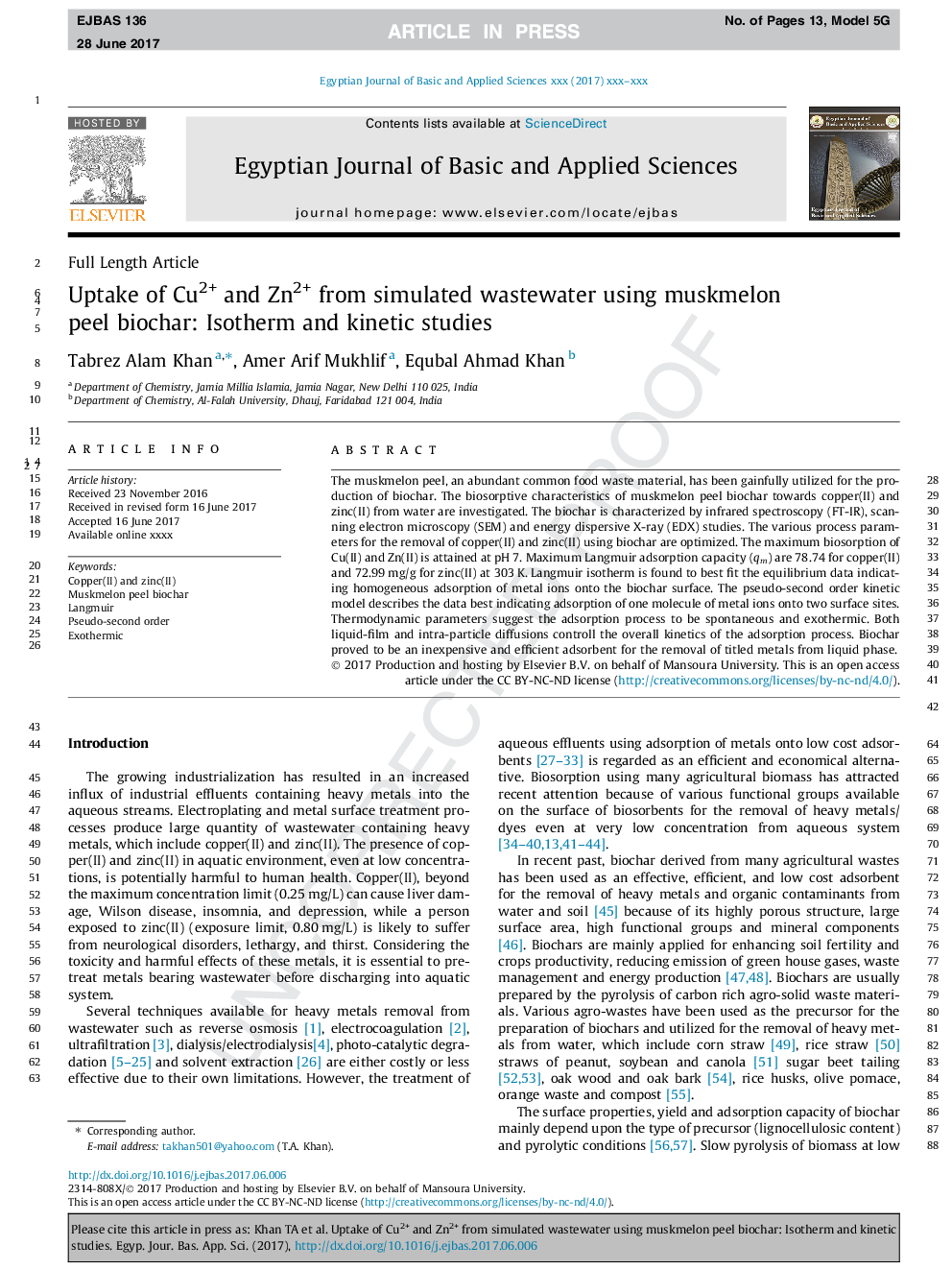| Article ID | Journal | Published Year | Pages | File Type |
|---|---|---|---|---|
| 6952347 | Egyptian Journal of Basic and Applied Sciences | 2017 | 13 Pages |
Abstract
The muskmelon peel, an abundant common food waste material, has been gainfully utilized for the production of biochar. The biosorptive characteristics of muskmelon peel biochar towards copper(II) and zinc(II) from water are investigated. The biochar is characterized by infrared spectroscopy (FT-IR), scanning electron microscopy (SEM) and energy dispersive X-ray (EDX) studies. The various process parameters for the removal of copper(II) and zinc(II) using biochar are optimized. The maximum biosorption of Cu(II) and Zn(II) is attained at pH 7. Maximum Langmuir adsorption capacity (qm) are 78.74 for copper(II) and 72.99Â mg/g for zinc(II) at 303Â K. Langmuir isotherm is found to best fit the equilibrium data indicating homogeneous adsorption of metal ions onto the biochar surface. The pseudo-second order kinetic model describes the data best indicating adsorption of one molecule of metal ions onto two surface sites. Thermodynamic parameters suggest the adsorption process to be spontaneous and exothermic. Both liquid-film and intra-particle diffusions controll the overall kinetics of the adsorption process. Biochar proved to be an inexpensive and efficient adsorbent for the removal of titled metals from liquid phase.
Related Topics
Physical Sciences and Engineering
Computer Science
Signal Processing
Authors
Tabrez Alam Khan, Amer Arif Mukhlif, Equbal Ahmad Khan,
